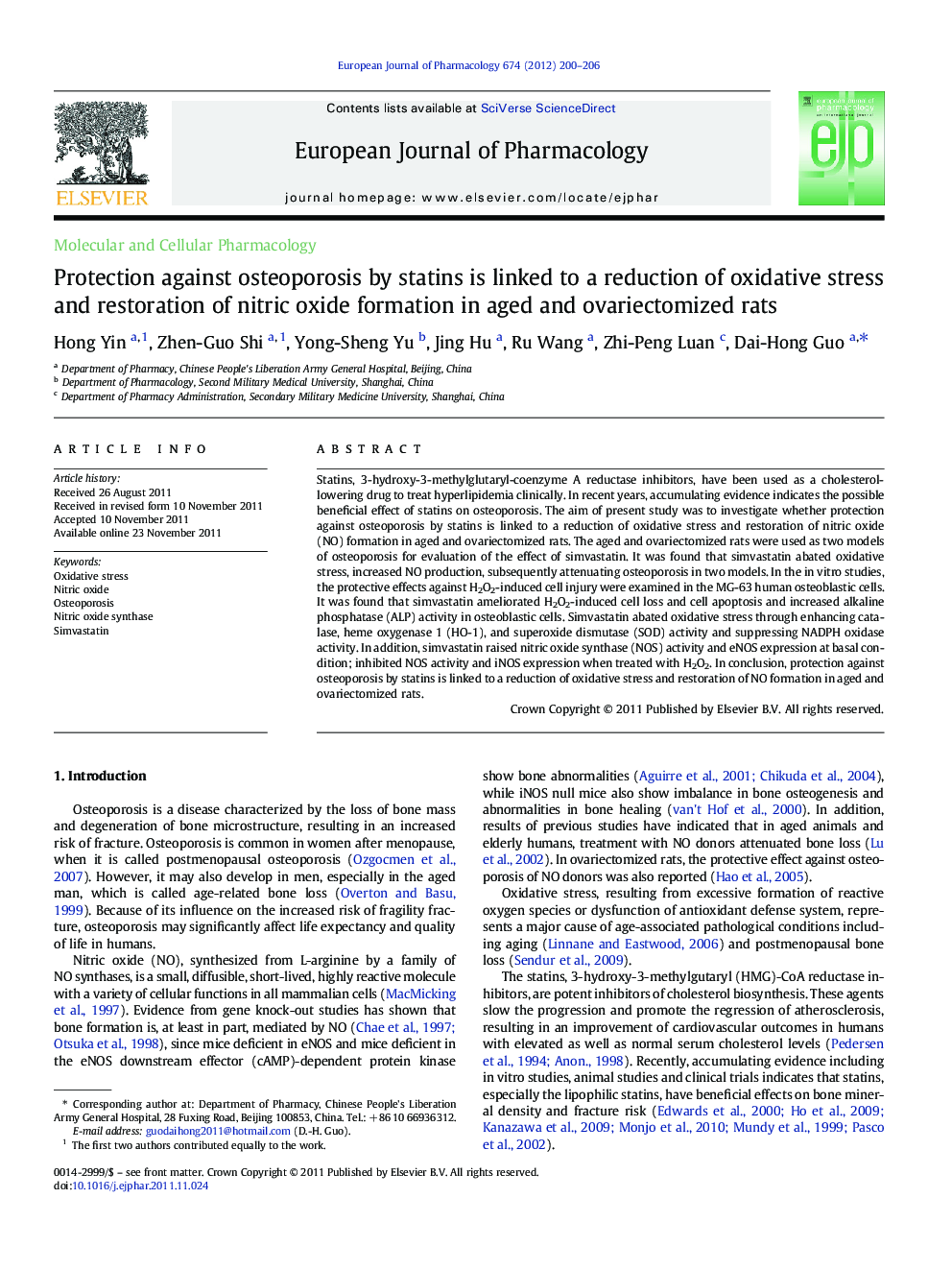| Article ID | Journal | Published Year | Pages | File Type |
|---|---|---|---|---|
| 5829829 | European Journal of Pharmacology | 2012 | 7 Pages |
Statins, 3-hydroxy-3-methylglutaryl-coenzyme A reductase inhibitors, have been used as a cholesterol-lowering drug to treat hyperlipidemia clinically. In recent years, accumulating evidence indicates the possible beneficial effect of statins on osteoporosis. The aim of present study was to investigate whether protection against osteoporosis by statins is linked to a reduction of oxidative stress and restoration of nitric oxide (NO) formation in aged and ovariectomized rats. The aged and ovariectomized rats were used as two models of osteoporosis for evaluation of the effect of simvastatin. It was found that simvastatin abated oxidative stress, increased NO production, subsequently attenuating osteoporosis in two models. In the in vitro studies, the protective effects against H2O2-induced cell injury were examined in the MG-63 human osteoblastic cells. It was found that simvastatin ameliorated H2O2-induced cell loss and cell apoptosis and increased alkaline phosphatase (ALP) activity in osteoblastic cells. Simvastatin abated oxidative stress through enhancing catalase, heme oxygenase 1 (HO-1), and superoxide dismutase (SOD) activity and suppressing NADPH oxidase activity. In addition, simvastatin raised nitric oxide synthase (NOS) activity and eNOS expression at basal condition; inhibited NOS activity and iNOS expression when treated with H2O2. In conclusion, protection against osteoporosis by statins is linked to a reduction of oxidative stress and restoration of NO formation in aged and ovariectomized rats.
